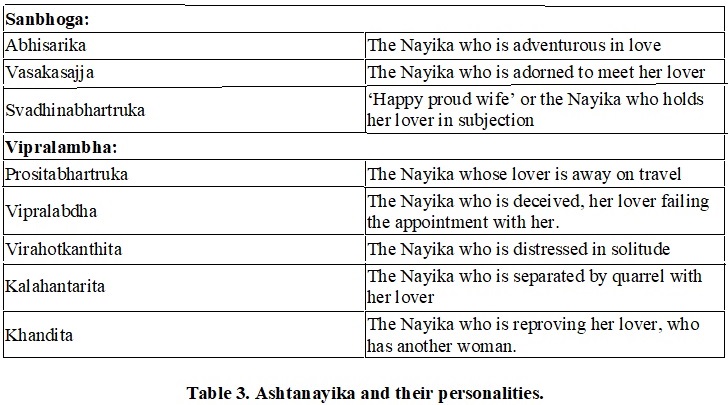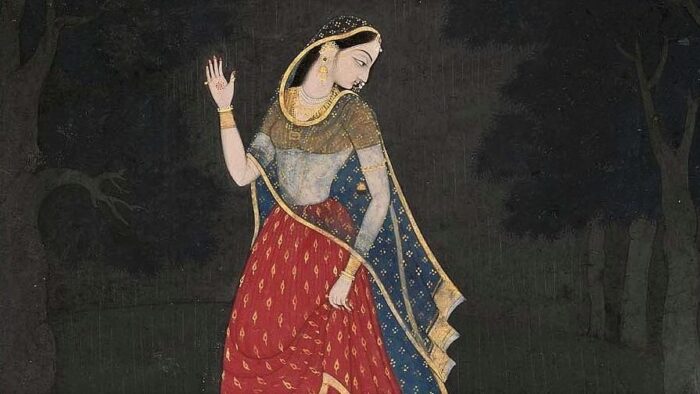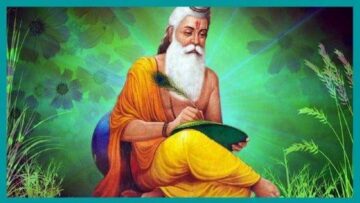ABSTRACT:
Music, painting, and poetry are associated with different fields of arts and are also operated and approached through different senses, i.e., through ears and eyes basically, but also through ones cognitive mind, which in modern terms can be called ‘Audiovisual’ art. We find a close link between them in Ragamala style of miniature painting. Ragamala paintings are visual interpretations of Indian musical modes, such as Ragas and Raginis which are envisioned as divine or human forms by musicians, poets and artists. Each Raga has its own indigenous moods, timing, season and emotions which are described in the Ragamala painting through a small poetry mentioned above the painting known as Raga dhyana. They describe a particular situation and sentiments subjected to a specific Raga, and these sentiments revolve around the character played by Nayaka & Nayika who exhibit psychological emotions and values. The paper highlights upon different types of Nayakas and Nayikas, and a major attention has been paid to identifying the Ashtanayikas represented in the Ragamala paintings. These Ashtanayikas have been classified on the basis of two important segment of Śṛṅgāra Rasa i.e. Sambhoga and Vipralambha of the Śṛṅgāra Rasa. The characterizations of Ashtanayika depicted in the Ragamala painting illustrate a significant element in delivering variables of Śṛṅgāra Rasa.
NAYIKAS
There are four main Nayikas, namely Padmini (elegant), Chitrini (versatile), Sankhini (bold) and Hastini (lazy). These four Nayikas are further classified into Svakiya Nayika (one who loves her own lord), she is devoted to her spouse, balanced in pleasure and pain, she is true in thoughts, deeds and speech; whereas, Parakiya Nayika (who loves someone else but not her lord), she is the one who is fond of being the sweetheart of the Nayakas; and Samanya Nayika (one who is impartial). These Nayikas are further classified based on their age and their experience in understanding the art of love in different perspectives. Among Svakiya Nayikas are Mugdha (the newly married), Madhya (adolescent) and Praudha (the mature or the experienced one). The Parakiya Nayikas are either Udha, who is married and Anudha, who is unmarried.
The Nayikas are further classified into two varieties of the Śṛṅgāra Rasa, the Rasa related to love; Sambhoga (love in meeting) and Vipralambha (love in separation). Vasakkasajja, Svadhinabhartruka and Abhisarikha are associated with Sambhoga; the others with Vipralambha.
ASHTANAYIKAS
*The Ashta nayika or the eight heroines mentioned in the ancient Natyashastra by Bharata Muni depicts the eight kinds of women in love. Mentors and theorists try to ascribe a variety of plots to any kind of story, whereas the Natyashastra divides each type of plot on the basis of emotions or a Rasa.
The eight nayikas or the heroines pertaining to the Śṛṅgāra Rasa or the erotic emotion consequently depict eight kinds of heroines in union with their beloved or sambhog, or separated from their beloved or Vipralambha in the Śṛṅgāra Rasa.

Abhisarika Nayika: She is the lady who goes out in the dark, braving the dangers of the night to find her beloved. She is associated with sambhoga in Śṛṅgāra rasa or the union.
Vasakkasajja Nayika: She is associated with Sambhoga or Union in Śṛṅgāra Rasa. She is described as a woman deeply in love with her beloved. She is waiting for him to return from his journey. As soon as the news of his returning reaches her, she begins to decorate herself with best of her ornaments, colourful flowers and various colours on her body. She especially decorates her bed chamber for her lord.
Svadhinabhartruka Nayika: Perhaps the happiest of all nayikas is the Svadhinabhartruka Nayika associated with sambhoga in Śṛṅgāra Rasa. She is depicted as a heroine seated before her beloved, she is the one who has her lover in subjection. The Nayak or the hero applies Alta on her feet. She is thus the nayika who has enslaved her lover.
Proshitabhartruka Nayika: She is a woman whose husband has gone away from her for some business and does not return on the appointed day. She is thus depicted mourning surrounded by her maids, but refusing to be consoled.
Vipralabhda Nayika: Described as a Nayika tearing down the jewels and flinging them down, the Vipralabhda Nayika is the one, who had been waiting for her lover in vain, but he has not come, even though the night has passed therefore, she pertains to Vipralabdha or separation in Śṛṅgāra Rasa. In Indian art, she is often depicted as a furious woman standing by the water’s edge and removing her garlands and ornaments in anger.
Virohakanthita Nayika: Described as the one who is depressed by separation. The Virohakanthita Nayika is also known as Utthka Nayika in Keshava Dasa’s text Rasikapriya. This is the heroine pining for her lover, who, due to his preoccupation, fails to return home. She is thus depicted as waiting for him, sitting or standing on a bed or out in a pavilion. In the late Indian miniatures this nayika is often shown in three variations.
Kalahantarita Nayika: She is an estranged mistress associated with Vipralambha of Śṛṅgāra rasa. She is depicted as a heroine who has quarrelled with her lover. She often refuses all kinds of messengers and gifts her lover sends to appease her. She is thus depicted sitting angrily with averted eyes, refusing all kinds of communications or appeasements.
The last Nayika of Bharata Muni’s classification is Khandita Nayika: She is the one enraged with her lover. She is an angry heroine, whose lover had promised to spend the night with her but instead, comes home the next morning after spending the night with another woman. She is thus depicted as deeply offended, rebuking her lover for his infidelity. This Nayika is also associated with Vipralambha or separation in Śṛṅgāra Rasa.
Image Credit: https://collections.mfa.org/download/149081
Conference on Hindu Aesthetics
Watch video presentation of the paper here:
Disclaimer: The opinions expressed in this article belong to the author. Indic Today is neither responsible nor liable for the accuracy, completeness, suitability, or validity of any information in the article.







